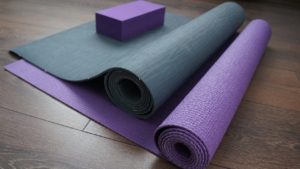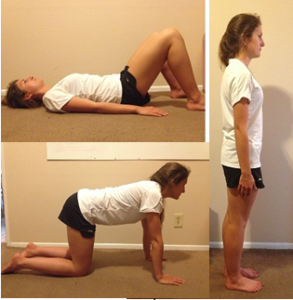
Urinary incontinence is a far more common issue than most people realize. This article explains some of the pelvic floor exercises that could help you cope with this condition and reduce symptoms.
Comprehensive pelvic floor telehealth sessions from the comfort of your home.
A loss of control over your bladder or urinary incontinence is an embarrassing issue that many people deal with in their everyday lives. The severity of this condition can vary depending on the individual. Some people only occasionally leak urine while others struggle to reach the toilet in time on most occasions when they have the sensation that they need to go.
While incontinence does impact people more as they get older, it’s important to note that it’s not an inevitability of the aging process. It is possible that you age and never notice this issue. However, if you are suffering from issues with your bladder then there are numerous steps you can take.
One possibility that you could explore is pelvic floor exercises. These exercises will help strengthen your pelvic floor muscles, helping you to stop issues with leakage, regardless of the cause of your incontinence. Here are several exercises that you can try for yourself.
Exercise 1

The first exercise that you can explore replicates the movements that your body goes through as you are walking around. To do this, lie flat on your back with your knees bent. You can then straighten each leg as though you are going on a walk lying down. You can feel different parts of your body moving. Now, tighten your pelvic floor muscles. To do this, imagine you are wearing an extra pair of pants that are slightly constricting the bottom area of your body. Complete the same exercise again, moving your legs. You’ll find that you can feel additional stability.
Exercise 2
Next, you can think about replicating an exercise that will help you keep your bladder stable while you are completing a process like climbing stairs. To do this, you can move your knee up towards your stomach when lying down. When you are completing this movement, you need to make sure that you are keeping your pelvic floor muscles and your stomach tight. If you need to, you can breathe out when your feet are back on the floor between these exercises.
Exercise 3

Finally, you might want to try an exercise that will be beneficial if you enjoy running. Again, you can start lying flat on your back with your knees bent. When you breathe out bring your lower abdominals in and find your pelvic floor.
Once you have done this you can fold one leg up halfway to your stomach. Your knee should be over your hip. Next, keep your stomach flat and your pelvic floor lifted as you bring the second leg up to meet the first. This is trickier than the other exercises but with practice, you will be able to get the right hold. Once you do this, you can repeat the process, breathing in between the movements.
Types of Incontinence
There are numerous different types of urine incontinence that you might suffer from. This includes:
- Stress Incontinence – During this condition, urine leaks when pressure is put on the bladder. This can be due to cough, laughing, sneezing, or even just lifting something heavy. Research suggests that more than 12 million people suffer from this condition.
- Urge Incontinence – The symptom of this condition will be an immense urge to urinate and the inability to stop it from happening. Usually, with this condition, you will find that you urinate frequently and often need to get up at night to do so. It’s important to be aware that this can be caused by a variety of different conditions and can be quite minor such as an infection.
- Overflow Incontinence – Here, the bladder never fully empties. As such, the individual often experiences constant or frequent dribbling of urine. It can be difficult to prevent this from happening and the right pelvic floor exercises will often help.
- Functional Incontinence – This can be a physical or mental issue that stops you from reaching the toilet in time to urinate. For instance, if you are suffering from arthritis, you might struggle to undo your pants quickly enough, leading to leakage.
- Mixed Incontinence – Here, you can suffer from various different types of incontinence at the same time.
It’s important to note that certain medications can also cause problems with incontinence. You should also be aware that this should never be considered normal. If you are suffering from incontinence it’s important to get checked out and explore treatment options.


